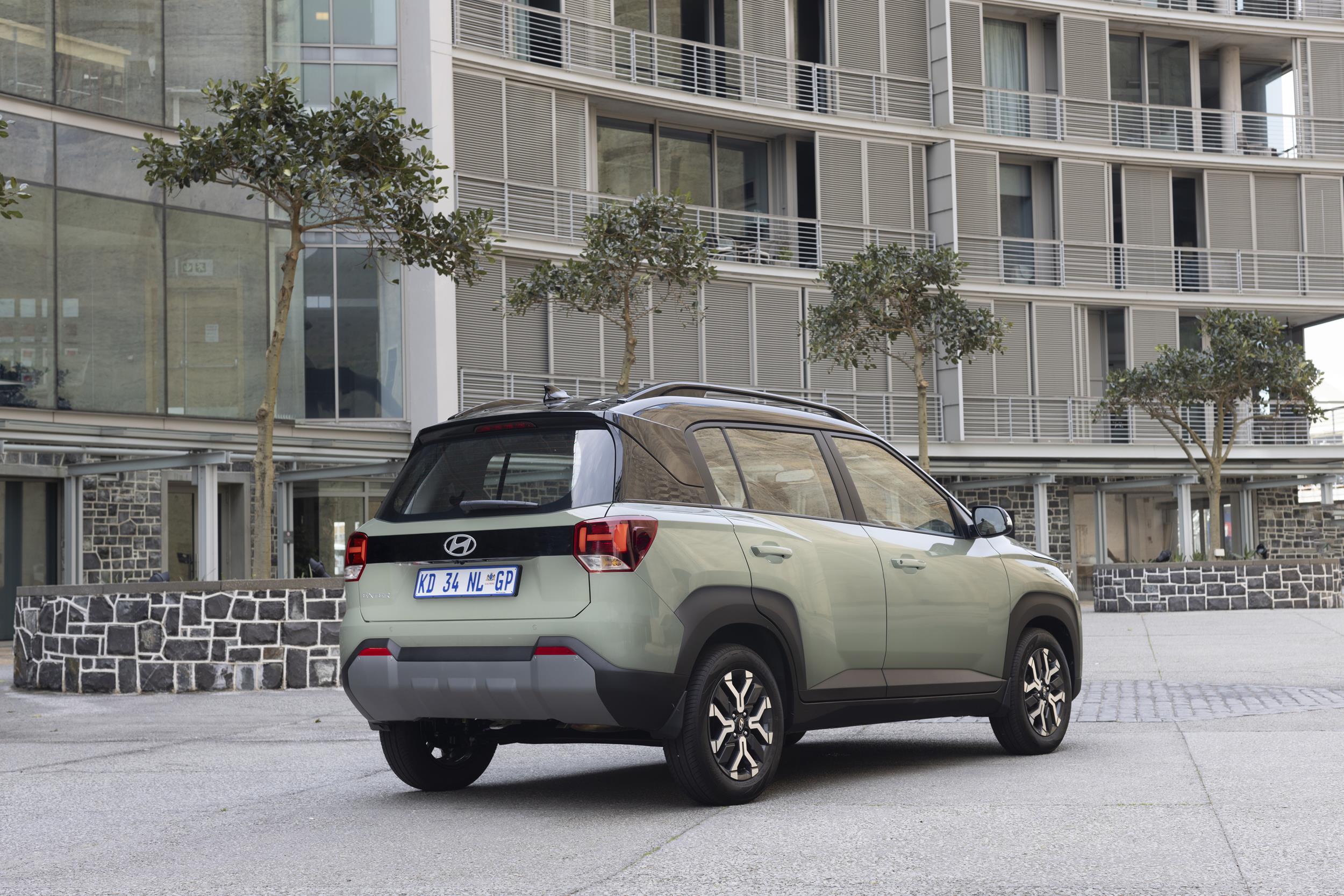Hyundai Exter (2024) Launch Review
The Indian-built Hyundai’s Exter has arrived in South Africa. Not only is it the Korean brand’s most affordable crossover model – it comes backed with a comprehensive warranty and service plan. We take the newcomer for a drive in the Western Cape.
What’s on offer?

The Hyundai Exter shares its platform with the Grand i10 hatchback and sedan. Given its small footprint and starting price of R270k (September 2024), it falls into the budget crossover category. The Exter’s rivals include the Suzuki Ignis, Renault Kiger, Nissan Magnite, Suzuki Fronx, and Toyota Starlet Cross.
The South African market will be getting 5 derivatives, which will be available in either 5-speed manual or 5-speed automated manual (AMT) guise. There are 3 trim grades: Premium, Executive, and Elite.

The Exter is powered by a naturally aspirated 1.2-litre 4-cylinder petrol that produces 61 kW and 114 Nm. It’s a pint-sized crossover, so it’s no surprise that the claimed average consumption is only 5.7 L/100 km.
Spec-wise, the Exter punches well above its weight. Even though the entry-level Exter costs under R300k at launch, its standard features list covers more than the basics. Here are some highlights of the 1.2 Premium derivative: it features a 4.2-inch digital instrument cluster, Apple CarPlay/Android Auto compatible 8-inch touchscreen infotainment system, rear parking sensors, as well as auto headlights.

During the launch event, we test-drove the Exter 1.2 Executive MT, which is the manual gearbox-equipped mid-range variant. The Executive trim includes (rather pretty) 15-inch alloy wheels, roof rails, mudguards, cruise control, a reverse-view camera and a (tilt-adjustable) leather-trimmed steering wheel.
We were delighted to see that Hyundai fitted a faster-charging USB-C port alongside a standard USB-A port for the front occupants. Yes, there are some cheap-feeling plastics in the cabin, but the common touchpoints feel quite substantial. Again, you’ve got to manage expectations; this is a budget vehicle!

Brands tend to keep budget-car prices low by omitting high-end safety features from such models, but in the case of the Exter, every derivative features 6 airbags. Higher-trim AMT derivatives have stability control, which – in our opinion – is a must-have. Tyre-pressure sensors are standard across the range.
What’s the Hyundai Exter like to drive?
During the launch, we drove on the national highway and then turned onto the coastal road to Hermanus. While the 1.2-litre 4-cylinder’s outputs may seem meagre in the era of turbocharging, the Exter has a low kerb weight (940 kg), which means the small crossover doesn’t require much grunt to get up to speed…

The 5-speed ‘box has a pleasingly light and direct action, while the clutch pedal is effortless to modulate. With this powertrain, the Exter is quite capable of pressing on in the cut and thrust of urban traffic.
The driver’s seat affords an excellent vantage out of the cabin and the multifunction ‘wheel is ultra-light to twirl, but the Exter’s steering responds to inputs promptly and directly. Suffice it to say, manoeuvring into (and out of) tight parking spaces will be far easier when you’re behind the tiller of one of these.

Given that the Exter was developed for the Indian market (where the average speed is lower than in SA – you rarely drive at triple-digit speeds on the Subcontinent), we expected the Hyundai’s performance to drop off when travelling on the highway. And sure enough, when we drove at the national limit (120 kph), we noticed that the test unit’s rev counter reading was approaching a rather heady 4 000 rpm.
Apart from the fact that the 1.2-litre 4-pot is quite vocal (even a bit buzzy) at those engine speeds, the Exter’s short gearing will hamper fuel economy somewhat when you’re touring. It’s a trait of most Indian-built A- and B-segment cars, but bear in mind that the Exter is city runabout first and foremost; besides, if you are in a hurry, you can rev the motor out – it may sound strained, but will deliver a dash of speed.
Speaking of fuel economy, we completed the test route with 2 occupants aboard and, after I drove to the driver-change location in a purposely conservative manner and my co-driver opted for a more spirited approach, we achieved near-identical fuel consumption figures: 6.0- and 6.2 L/100 km – impressive!

One of the biggest selling points of the Exter is its suitability for driving on dirt roads (or its “gravel-travel capability”, if you like). Thanks to its plump tyres and 185 mm of ground clearance, the plucky Korean looks ready to venture down a dirt track. We’ll be sure to test this when the unit makes its way to us.
How much does the Exter cost in South Africa?
The new Exter ships standard with a 3-year/45 000 km service plan and Hyundai’s 7-year/200 000 km manufacturers’ warranty.
| Hyundai Exter 1.2 Premium MT | R269 900 |
| Hyundai Exter 1.2 Premium AMT | R294 900 |
| Hyundai Exter 1.2 Executive MT | R289 900 |
| Hyundai Exter 1.2 Executive AMT | R314 900 |
| Hyundai Exter 1.2 Elite AMT | R334 900 |
Summary

With rising new-car prices (in conjunction with the escalating cost of living) pushing new-car ownership out of reach of so many consumers, it’s refreshing to find a stylish, well-packaged and safety feature-rich crossover positioned under R300 000. In the race for passenger segment dominance, we can see Hyundai South Africa making serious inroads into territory previously held by Suzuki and Volkswagen.
Should you consider buying an Exter? Yes, certainly. At the price, there’s very little to fault with this stylish entry-level crossover. Every minor drawback we discovered during our test drive of the Exter is outweighed by the Hyundai’s keen price and point ownership proposition (including its long warranty). We look forward to getting to know the model better – and trying out the automated manual version.













